New Mills Grammar School
Most grammar schools have very old foundations and are more or less rich in endowments and traditions. It is of interest to examine New Mills Grammar School and to see what it arose from and how it reached its present proportions. How it came into existence was written by the late Mr J. A. Nichols, its first headmaster, engrossed on parchment and placed in a cavity beneath the corner stone of the present building when it was laid by the late Mr L. J Hall, J.P., C.C., who was then chairman of the governors, on December 14th 1912.
.jpg) Mr Nichols began the story by saying ‘ it cannot be stated concerning this school that it was at any time founded, established, endowed or even formally opened. By a slow process it has emerged from other institutions. The process of development is the history of higher education in New Mills, and extends with out break of continuity over 30 years. Mr Nichols began the story by saying ‘ it cannot be stated concerning this school that it was at any time founded, established, endowed or even formally opened. By a slow process it has emerged from other institutions. The process of development is the history of higher education in New Mills, and extends with out break of continuity over 30 years.
The centre of all educational work in New Mills, outside the elementary schools, during the period 1879-1889 was the Mechanics Institute, which having taken it origin in a house on Market Street quite twenty years earlier, was at this time located in the Public Hall (now the Town Hall) with a library, reading-room and classroom. It was supported entirely by voluntary subscriptions, out of which it paid an annual rental of ten pounds to the trustee of the hall.
The president of the institute from 1874 up to the time of his death was Alderman John Mackie. J.P., and it was largely due to his far-sightedness, liberality and public spirit that the institute was able to lay the foundations of higher education in New Mills. In 1879 the committee invited me to take up a chemistry class which had been in abeyance for two years owing to the expense of carrying it on. Some apparatus was bought by Mr Mackie and the class was opened under the regulations of the Science and Arts Department. In this class during the first session there were 24 students whose ages varied from 13 to 52. Next year additional classes were opened in mathematics and human physiology. In 1883 a cottage in the High Street was rented, the lower and upper floors were fitted with benches and the apparatus for practical work in chemistry. In this and the subsequent work of the Science Committee much was owing to the hon. Secretary the Late Mr John P. Liddell.
The cost of the fittings amounted to about eighty pounds, of which Mr Mackie contributed fifty.
The School Board having given to the committee the free use of class rooms at the school on Spring Bank, other subjects were taken up and in 1885 the prospectus contained the following: Mathematics, inorganic chemistry, drawing, physiology, theoretical mechanics, theoretical and practical organic chemistry, theoretical and practical calico printing , bleaching and dyeing, geometry, machine construction and building. The teachers were Mr Nichols and Mr Julius Stott. The financial arrangements for carrying on the classes were simple. The rent of the cottage, the cost of the chemicals and other regular expenses were paid out of the income, consisting of students fees and the grants from the Science and Arts Dept, the balance been paid to the teachers at the end of the session. This system continued for ten years.
In 1887 the cottage laboratory was condemned by the inspector of the Science and Arts Dept. whose duties compelled him to spend an evening in its atmosphere during working hours. In a subsequent interview with the committee he likened it to the black hole of Calcutta. After this it was agreed that something ought to be done at once to enable the work to go on, and out of this arose the movement for the Jubilee extension of the public hall, to include a lecture room, chemical laboratory and other additions. Subscriptions to the extent of some hundreds of pounds were immediately promised, but the scheme never matured.
It was felt that the work was out growing the bounds of voluntary effort, and it was finally decided to invite the School Board to carry it on. Next year this body having obtained a loan of eight hundred and eighty six pounds for the purpose began an extension of the Board School by the erection of a chemical laboratory and lecture room. This was intended at first for use as a higher grade day school and for the evening technical classes. In 1889 the Technical Instruction Act was passed and adopted by the Urban District Council. They delegated their powers, except that of rating to the School Board. In the same year the New Mills Mechanics Institute held its last annual public meeting and formally transferred its classes to the School Board. The history of this period illustrates at once the force and limits of voluntary effort. It was a time marked by great enthusiasm and vitality. Every townsman of any distinction or influence took part in the work, including the Rev F.W. Newman, the vicar, and the ministers of other denominations. The students were eager for knowledge and zealous in their work. Over 600 individuals had received instruction in the school and the moral and material results measured by any standard that can be applied have not been surpassed by any of the succeeding generations of students. A re-union inaugurated by the students of this period is held annually in Manchester and bears constant testimony to the corporate spirit then existing.
Mr Nichols, in the next period, 1890-1903 deals with the work of the Schools Board up to the time of the dissolution ‘instead of a higher grade school, the board had decided on the advice of the Science and Arts Department to open an organised science day school. It began with seven students from the higher classes of the elementary school, but the number had grown to twenty by the end of the first year. Mr Henry Barber succeeded Alderman Mackie on the County Council and very greatly assisted the School Board in the development of the school.
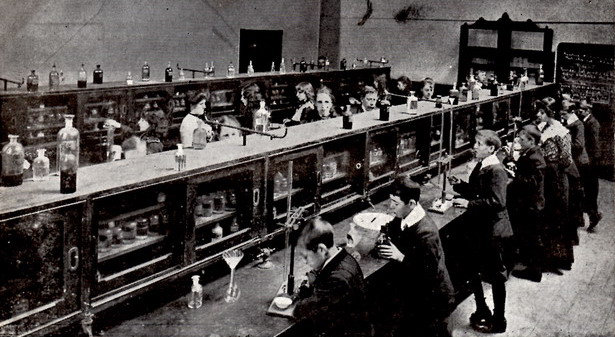 In 1892 the school was affiliated with the Derbyshire Technical Education Committee as a district technical school. The benefits of the grant from the County Council under the Technical Instruction Act now began to be felt and appreciated. At the request of the Science and Arts Department more class rooms a physical laboratory and a room for wood work were added, and at the same time Mrs Mackie gave to the school a library in memory of her late husband and she has maintained it ever since. In 1898 there was a further extension . New laboratories and class rooms were added partly to satisfy the growing demands of the Department in respect of the day school and partly and partly to provide for the growing evening technical classes especially chemistry. The organised science day school had now become a school of science under the altered regulations and the curriculum was modified and extended. The extension of the school was opened in September 1899 by the Duke of Devonshire. The Education Act of 1902 made the County Council responsible for education within their area and as a result the School Board was dissolved in 1903. The staff of the school at this time consisted of Mr Nichols, two assistants and two visiting teachers. The grant earned from the Board of Education in 1903 was just over three hundred and nine pounds on 57 pupils. During this period the School Board was engaged on a continual effort to comply with the increasing demands of the Science and Arts Department in regard to accommodation , staffing and equipment of the school. Loss of recognition so often threatened would have crippled the school by the loss of substantial grants and it was through the efforts of the Board that the building took its present form by repeated additions and alterations. Through its most critical period the school had a most faithful and determined supporter in the late councillor Godward, who, as the first clerk to the School Board and afterwards as a member of the Derbyshire Education Committee devoted himself to the work. His lifelong connection with education enabled him to grasp the difficulties in all their bearings and to give the most valuable guidance in the work he so zealously supported . The headmaster is specially grateful to him for his help and encouragement during this period of difficulty. In 1892 the school was affiliated with the Derbyshire Technical Education Committee as a district technical school. The benefits of the grant from the County Council under the Technical Instruction Act now began to be felt and appreciated. At the request of the Science and Arts Department more class rooms a physical laboratory and a room for wood work were added, and at the same time Mrs Mackie gave to the school a library in memory of her late husband and she has maintained it ever since. In 1898 there was a further extension . New laboratories and class rooms were added partly to satisfy the growing demands of the Department in respect of the day school and partly and partly to provide for the growing evening technical classes especially chemistry. The organised science day school had now become a school of science under the altered regulations and the curriculum was modified and extended. The extension of the school was opened in September 1899 by the Duke of Devonshire. The Education Act of 1902 made the County Council responsible for education within their area and as a result the School Board was dissolved in 1903. The staff of the school at this time consisted of Mr Nichols, two assistants and two visiting teachers. The grant earned from the Board of Education in 1903 was just over three hundred and nine pounds on 57 pupils. During this period the School Board was engaged on a continual effort to comply with the increasing demands of the Science and Arts Department in regard to accommodation , staffing and equipment of the school. Loss of recognition so often threatened would have crippled the school by the loss of substantial grants and it was through the efforts of the Board that the building took its present form by repeated additions and alterations. Through its most critical period the school had a most faithful and determined supporter in the late councillor Godward, who, as the first clerk to the School Board and afterwards as a member of the Derbyshire Education Committee devoted himself to the work. His lifelong connection with education enabled him to grasp the difficulties in all their bearings and to give the most valuable guidance in the work he so zealously supported . The headmaster is specially grateful to him for his help and encouragement during this period of difficulty.
Mr Nichols next deals with the period 1903-1912 and says ‘ the school has now become a county secondary school and the curriculum underwent a considerable change. Science teaching no longer predominated and the school was organised to provide the elements of a more liberal education. The result of the change was soon manifest. The numbers, practically stationary for some years increased at an average rate of fifteen scholars per annum during the eight years up to 1911, when the school became full, many children having since been refused admission. The Derbyshire Education Committee made the school one of their pupil teacher centres in 1905. In 1908 the County Council purchased the present site for the erection of a secondary school the present premises having been declared unsuitable by the Board of Education. The same year Councillor Godward gave a thousand pounds to provide a trust for scholarships in secondary schools and 13 scholars are now attending the New Mills School under that trust.
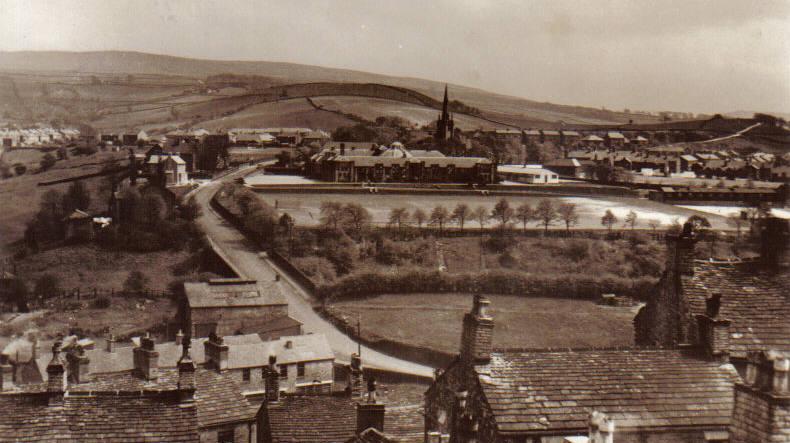
Up to June 1908 being under the same roof the two schools had been controlled by the same headmaster. During the earlier development there had been many advantages in such an arrangement between two schools so closely related, but the rapid growth of the secondary school made the change imperative and the headmaster was relieved of the responsibility of the elementary school. The change has been of great advantage to both schools. During this period the school has been financed by the Derbyshire County Council and its proficiency greatly improved through the provision of a more adequate staff.
Many thanks are due to Councillor L.J.Hall., J.P., the chairman of the governors who has worked so assiduously in the interests of the school on the County Council since the death of his predecessor the late Edward Godward, more especially in the maturing of the plans of the new school. Mr Henry Barber, J.P., is the only present governor who was also on the original science committee in 1876. His service has been continuous ever since. The school has now 163 scholars, 76 boys and 87 girls. Of the latter nine are pupil teachers. There are seven forms. In the lower the average age of pupils is 12 years and in the highest 17 years and two months.
That was the story as told by Mr Nichols, to whom so much is owed for the work he did in the making of New Mills Grammar School. The rest is within living memory. Preparations were being made for the formal opening of the new school in September 1914, but the outbreak of war put an end to them and the school ‘flitted’ from Spring Bank without ceremony. Mr Nichols continued as headmaster for some years and was succeeded by Mr W.A. Whitton. During the Second World War Mr Whitton retired and his place was taken by Mr N. Taylor. For many years the school was over crowded, but no extension was made to the actual building since it was built by the late Mr J. W. Swindells in 1914, although use was made of wooden huts. Plans had been prepared for an extension when war broke out. Plans were also passed for extensions in prefabricated materials.
It is well when so much is being heard of education that the beginnings of New Mills Grammar School should be known to the present generation, and that it came from the people themselves, who were so concerned about education that they went to school in what was described as ‘a black hole of Calcutta’. Will there be again a time ‘marked by great enthusiasm and vitality’ such as Mr Nichols spoke of and when ‘ every townsman of any influence or distinction will take part in the work.’
New Mills School celebrated its 100th anniversary in December 2012. The school marked the occasion with many excellent events, including a superb week long exhibition of photographs and artefacts from the last one hundred years of school history and two Gala performances of drama, music, science, dance and literature.
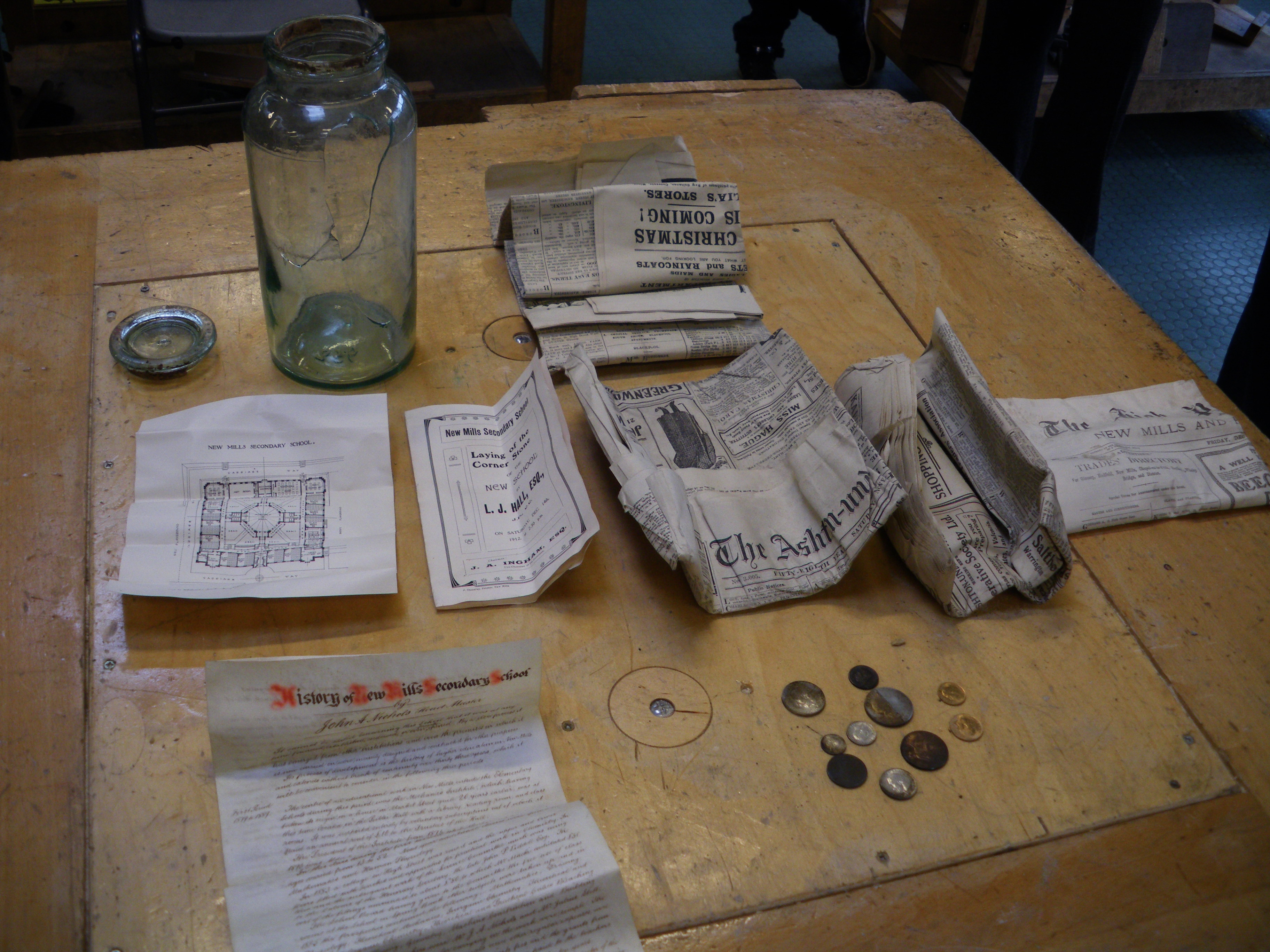 In another event designed to mark the occasion the school retrieved the time capsule mentioned above from behind the foundation stone of the main building. The capsule consisted of a large glass jar and stopper sealed with wax. Inside several paper items were visible. I was lucky enough to be invited by head teacher Mr Elms to the opening of the jar and witness the contents as they were removed. The jar contained three local newspapers two of the 14th December 1912 the day of the jars interment, an original plan of the school, a piece of parchment on which Mr Nichols had personally engrossed the history of the school to that date and a range of coins all dated 1912, including surprisingly a gold sovereign and gold half sovereign. In another event designed to mark the occasion the school retrieved the time capsule mentioned above from behind the foundation stone of the main building. The capsule consisted of a large glass jar and stopper sealed with wax. Inside several paper items were visible. I was lucky enough to be invited by head teacher Mr Elms to the opening of the jar and witness the contents as they were removed. The jar contained three local newspapers two of the 14th December 1912 the day of the jars interment, an original plan of the school, a piece of parchment on which Mr Nichols had personally engrossed the history of the school to that date and a range of coins all dated 1912, including surprisingly a gold sovereign and gold half sovereign.
On the 14th of December 2012, all the original items except the gold coins were placed in an airtight container, by members of the school council. With them were placed photographs of the nine head teachers of the school including Mr Nichols and present head Mr Elms, school photographs of pupils and grounds, newspapers, digital recordings of the opening of the original time capsule and of the Gala performances and a mint set of 2012 coins. A number of invited guests, staff and the school council then witnessed the container been placed back in the cavity behind the foundation stone where the original had so successfully rested for a century. It will one day in the future surely delight another generation of students at New Mills School.
The gold sovereigns will be sold and the proceeds go towards the schools campaign to introduce solar panels to the roof of one of its buildings, providing sustainable power for many years to come.
For more images see – Views of New Mills > 100 Years of New Mills School
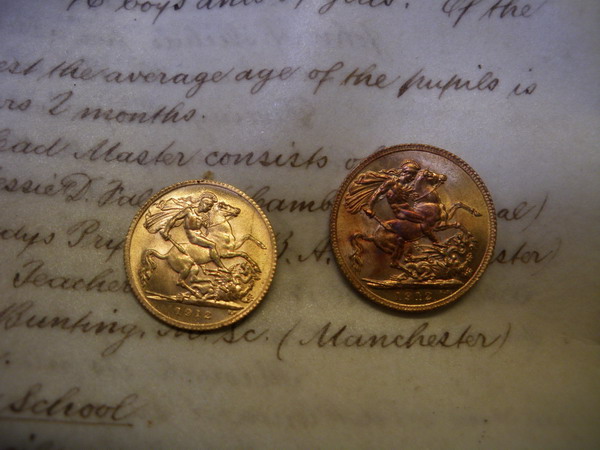 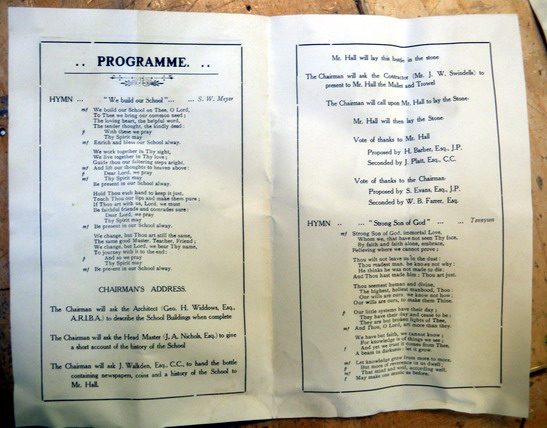
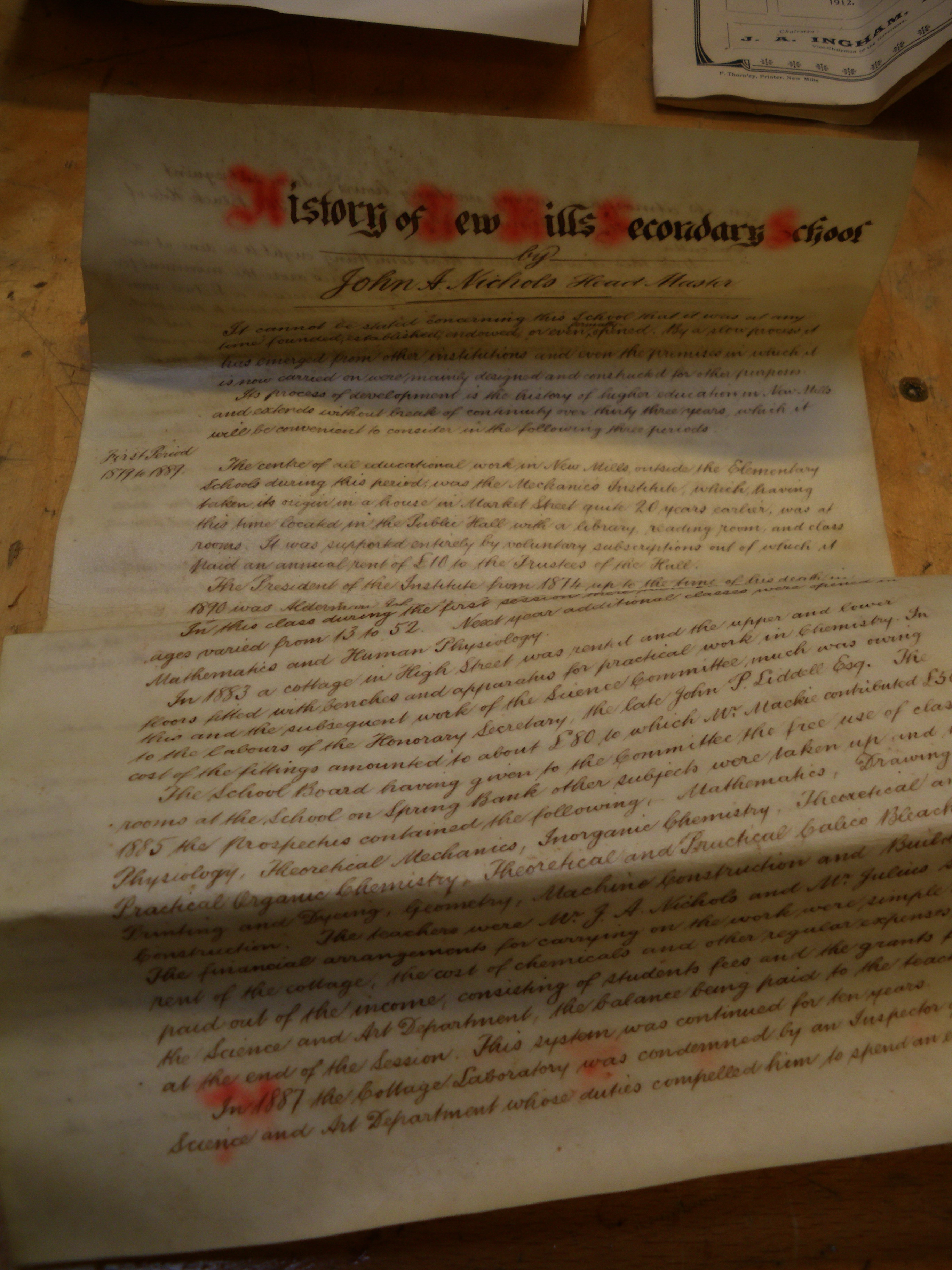 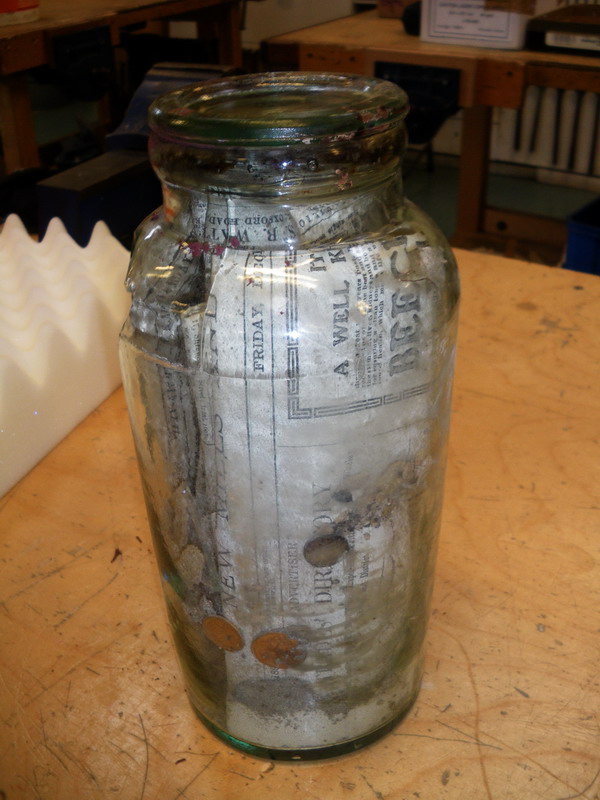
Mr John A. Nichols, J.P.
A Tribute by Rev. J. E Lauckner.
A special service was held at the Congregational Church in May 1929, to pay tribute to the life of John Nichols, a man whose educational works in New Mills had improved the lives of so many families. Mr Nichols was also a hard working Councillor and Justice of the Peace. It was said of him at the time ‘ that New Mills owes more to him than any man can estimate.’
Reverend Lauckner told the huge gathering of friends, former pupils and colleagues. ‘The story of the life of our friend, John Nichols is the history of education in New Mills for nearly the last fifty years. He had only one sphere of educational service and that was in New Mills. He came here from his college and was a headmaster all his teaching days, over forty years. That in itself was a wonderful achievement. He began as headmaster of the British School held in the rooms below this church. A Board school was built shortly after he came, and he went to be headmaster there. New Mills in those days was evidently a growing place, and the school had to be enlarged several times. There was a Mechanics Institute here in those days. It was supported by public subscriptions, and seems to have been suffering from lack of funds, for it is stated that the chemistry class had been given up for two years. To his lasting honour, Mr Nichols revived that class. It is not too much to say that the place in which chemistry has in the educational programme of New Mills is due to that timely action of his. Many young men owe their careers as brilliant chemists to Mr Nichols. We owe our secondary school to the energetic action of Mr Nichols and the late Mr Godward. When a professor of Manchester University made a survey of higher education in Derbyshire, he recommended a higher elementary school for New Mills. The County Education Committee were inclined to act on that recommendation, but Mr Nichols and Mr Godward offered strenuous opposition. They won their battle and secured the secondary school we now have.Mr Nichols was plainly a man of vision, a man of courage, passionately devoted to the welfare of the youths, the young men and women of the town. He saw a vision of a splendid educational centre at New Mills. The present educational position, the splendid secondary school, from which so many brilliant scholars have been turned out, have justified the vision and courage, and his career was crowned when he became its first headmaster in 1914.
Your presence here is an expression of thanksgiving for the life, the character, and the work of Mr Nichols and all that has meant for this town. There will be many more of his old students, lawyers, doctors, teachers and scientists in all parts of the world joining with us in that thanksgiving. I want to commend these qualities of Mr Nichols for your example. Vision, courage and a spirit of progressiveness, these were marks of his character, elements that made for success in his personal life and for the success of his educational position in New Mills.’
 |







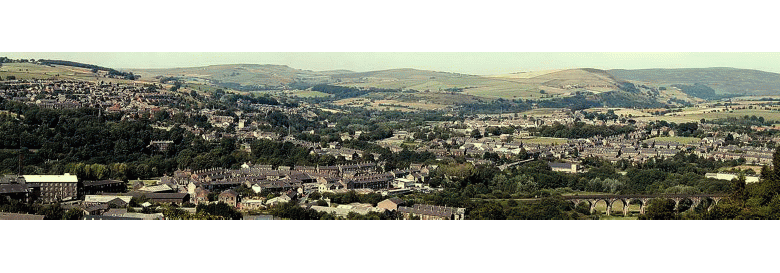

.jpg) Mr Nichols began the story by saying ‘ it cannot be stated concerning this school that it was at any time founded, established, endowed or even formally opened. By a slow process it has emerged from other institutions. The process of development is the history of higher education in New Mills, and extends with out break of continuity over 30 years.
Mr Nichols began the story by saying ‘ it cannot be stated concerning this school that it was at any time founded, established, endowed or even formally opened. By a slow process it has emerged from other institutions. The process of development is the history of higher education in New Mills, and extends with out break of continuity over 30 years.  In 1892 the school was affiliated with the Derbyshire Technical Education Committee as a district technical school. The benefits of the grant from the County Council under the Technical Instruction Act now began to be felt and appreciated. At the request of the Science and Arts Department more class rooms a physical laboratory and a room for wood work were added, and at the same time Mrs Mackie gave to the school a library in memory of her late husband and she has maintained it ever since. In 1898 there was a further extension . New laboratories and class rooms were added partly to satisfy the growing demands of the Department in respect of the day school and partly and partly to provide for the growing evening technical classes especially chemistry. The organised science day school had now become a school of science under the altered regulations and the curriculum was modified and extended. The extension of the school was opened in September 1899 by the Duke of Devonshire. The Education Act of 1902 made the County Council responsible for education within their area and as a result the School Board was dissolved in 1903. The staff of the school at this time consisted of Mr Nichols, two assistants and two visiting teachers. The grant earned from the Board of Education in 1903 was just over three hundred and nine pounds on 57 pupils. During this period the School Board was engaged on a continual effort to comply with the increasing demands of the Science and Arts Department in regard to accommodation , staffing and equipment of the school. Loss of recognition so often threatened would have crippled the school by the loss of substantial grants and it was through the efforts of the Board that the building took its present form by repeated additions and alterations. Through its most critical period the school had a most faithful and determined supporter in the late councillor Godward, who, as the first clerk to the School Board and afterwards as a member of the Derbyshire Education Committee devoted himself to the work. His lifelong connection with education enabled him to grasp the difficulties in all their bearings and to give the most valuable guidance in the work he so zealously supported . The headmaster is specially grateful to him for his help and encouragement during this period of difficulty.
In 1892 the school was affiliated with the Derbyshire Technical Education Committee as a district technical school. The benefits of the grant from the County Council under the Technical Instruction Act now began to be felt and appreciated. At the request of the Science and Arts Department more class rooms a physical laboratory and a room for wood work were added, and at the same time Mrs Mackie gave to the school a library in memory of her late husband and she has maintained it ever since. In 1898 there was a further extension . New laboratories and class rooms were added partly to satisfy the growing demands of the Department in respect of the day school and partly and partly to provide for the growing evening technical classes especially chemistry. The organised science day school had now become a school of science under the altered regulations and the curriculum was modified and extended. The extension of the school was opened in September 1899 by the Duke of Devonshire. The Education Act of 1902 made the County Council responsible for education within their area and as a result the School Board was dissolved in 1903. The staff of the school at this time consisted of Mr Nichols, two assistants and two visiting teachers. The grant earned from the Board of Education in 1903 was just over three hundred and nine pounds on 57 pupils. During this period the School Board was engaged on a continual effort to comply with the increasing demands of the Science and Arts Department in regard to accommodation , staffing and equipment of the school. Loss of recognition so often threatened would have crippled the school by the loss of substantial grants and it was through the efforts of the Board that the building took its present form by repeated additions and alterations. Through its most critical period the school had a most faithful and determined supporter in the late councillor Godward, who, as the first clerk to the School Board and afterwards as a member of the Derbyshire Education Committee devoted himself to the work. His lifelong connection with education enabled him to grasp the difficulties in all their bearings and to give the most valuable guidance in the work he so zealously supported . The headmaster is specially grateful to him for his help and encouragement during this period of difficulty. 
 In another event designed to mark the occasion the school retrieved the time capsule mentioned above from behind the foundation stone of the main building. The capsule consisted of a large glass jar and stopper sealed with wax. Inside several paper items were visible. I was lucky enough to be invited by head teacher Mr Elms to the opening of the jar and witness the contents as they were removed. The jar contained three local newspapers two of the 14th December 1912 the day of the jars interment, an original plan of the school, a piece of parchment on which Mr Nichols had personally engrossed the history of the school to that date and a range of coins all dated 1912, including surprisingly a gold sovereign and gold half sovereign.
In another event designed to mark the occasion the school retrieved the time capsule mentioned above from behind the foundation stone of the main building. The capsule consisted of a large glass jar and stopper sealed with wax. Inside several paper items were visible. I was lucky enough to be invited by head teacher Mr Elms to the opening of the jar and witness the contents as they were removed. The jar contained three local newspapers two of the 14th December 1912 the day of the jars interment, an original plan of the school, a piece of parchment on which Mr Nichols had personally engrossed the history of the school to that date and a range of coins all dated 1912, including surprisingly a gold sovereign and gold half sovereign. 


